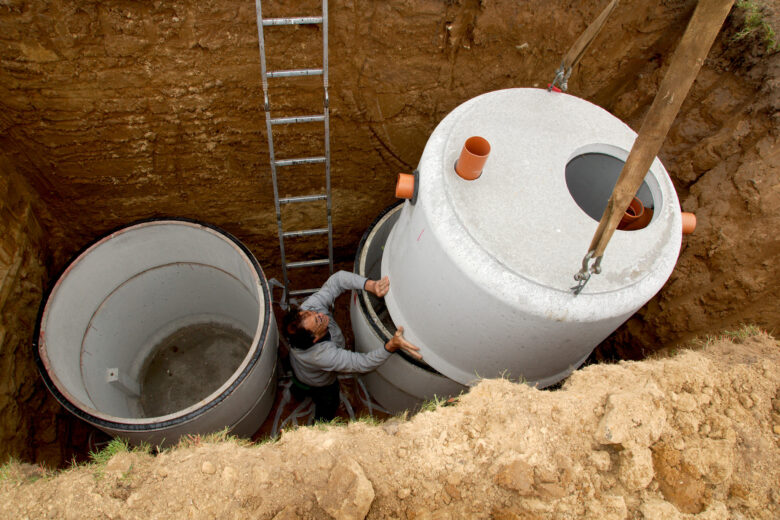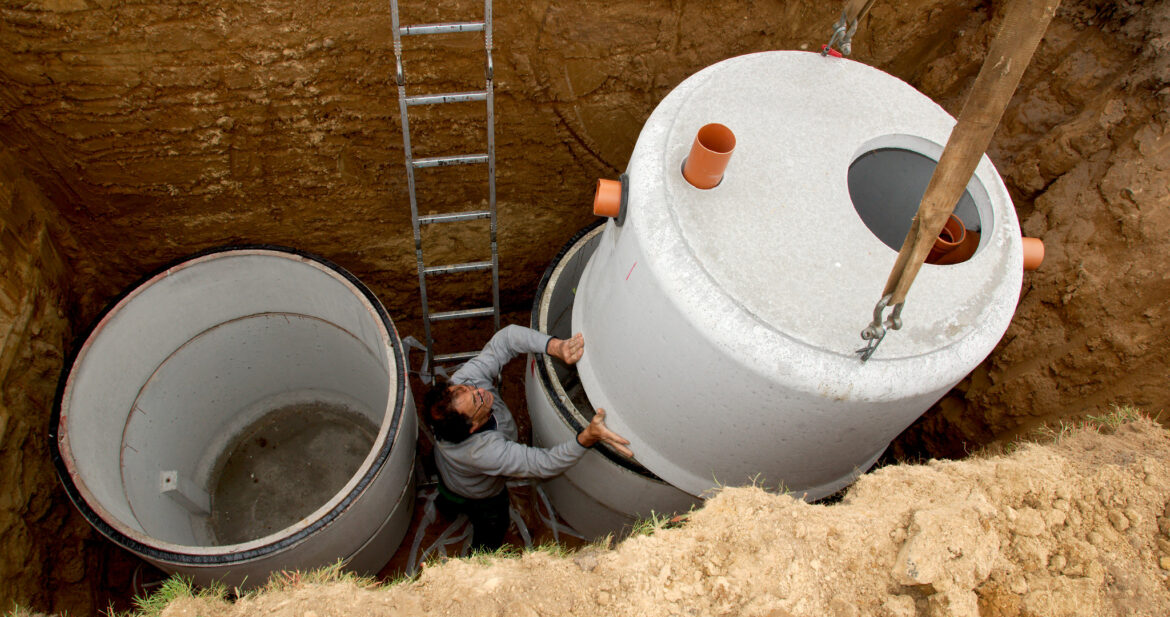
Your septic tank processes waste water from your house and disposes of it in a safe way. Water from your bathroom, kitchen and laundry is stored and treated in your septic tank and if the tank is not properly maintained it may break or overflow. A broken septic tank constitutes as a biological hazard and costs a lot of money to replace. Avoiding this scenario is easily done.
How Your Septic System Works:
A septic system, traditionally, is comprised of three parts: the tank, the drain field and the soil beneath the drain field.
The tank itself is a concrete box underneath or outside of your house. This is where all the waste water initially flows to. There, the solids are allowed to settle and the lighter greases are allowed to rise to the top. An outlet midway up the tank allows the cleaner water in between to flow out. A filter is placed over this outlet to prevent any stray solids from passing through.
From there, the water flows into pipes which run through the drain field. These pipes have small perforations through which small amounts of water slowly pass through. In these small quantities, infected and unclean water can be cleaned by the ground.
The soil beneath the drain field will slowly purify the water as it makes its way down to the ground water level where it will then flow into rivers or bodies of water. This is why chemicals are not used as they could cause damage to wild life.
Legal Requirements
As a homeowner you are legally responsible for maintaining your own septic system. Before you install a septic system, you must have your county environmental health specialist inspect the soil.
This will provide you with a legal permit which you will need before construction and installation. You will be required to show this permit to any contractors working either on the electrical or septic system. If you lack a permit, you may be denied electricity.
How to Maintain Your Septic System
There are four main actions you can take to maintain your septic tank:
Regularly inspect your septic tank. If too many solids build up it may cause an overflow which may block the outlet into the drain field. If you notice a build up of solids you will have to pump your tank. Pumping may be done by your service provider, a hired contractor or even yourself if you have the correct equipment.
Use water efficiently. It takes time for the water to be processed fully and if more than fifty gallons a day are produced, problems with overflow or back up will begin to arise.
Do not dispose of hazardous waste in either your sinks or toilets. Strong acids, alkali and other chemicals will poison the ground and flow into rivers and bodies of water. In addition they may have strong chemical reactions within your tank causing pressure build ups.
Last of all, care for your drain field. Only plant grass over your drain field. Trees and bushes with strong roots may break pipes or even tanks. Don’t park cars above your drain field as the pressure will compact the soil, slowing the rate of escaping water and backing up your system. Finally, do not flood the ground with water as there will be no place for the unclean water to go.
Buy high quality septic tanks and be sure to maintain them. Good luck to you.

Leave a Reply